Samsung Galaxy S24 ultra vs. iPhone 15 Pro Max

Surely, we couldn’t miss the chance to compare the two main rivals in the world of smartphones – Samsung Galaxy vs. Apple iPhone. Since both brands have made their way to the market, they have tried to perform better than the other, offering users the latest updates in technology and innovations. Of course, by now you may already have your own opinions regarding two brands and their products but some people seek an answer to the question of how Samsung’s and Apple’s smartphones differ on the basis of their indicators. As such, we present to you the comparison of Samsung Galaxy S24 Ultra and Apple iPhone 15 Pro Max. Find out how these two flagship smartphones differ in their design, performance, camera, storage, battery life, and other indicators. Let’s get started…
Design & size comparison:
The Samsung Galaxy S24 Ultra has an aluminum frame and Gorilla Glass Victus 2 on the front and back. The phone is very large. Specifically, it is 162.3 mm high, 79 mm wide, and only 8.6 mm thick, and it weighs 232 g or 233 grams (8.18 oz). The S24 Ultra comes in seven colors Titanium Black, Titanium Gray, Titanium Violet, Titanium Yellow, Titanium Blue, Titanium Green, Titanium Orange. The design of the phone is a combination of stunning looks, durability, elegance, and modernity. The itanium frame (grade 2) frame will protect users from drops and resist impact. The product is heavier and larger; this makes it more substantial and comfortable to hold and work with. The available colors are versatile, so there will be something for each person. It is also a classic or more unique option that will satisfy both need.
The iPhone 15 Pro Max has a frame of surgical stainless steel and a front cover of Ceramic Shield. The back is built of textured matte glass both to ensure its durability and style. The new phone is 159.9 in height, 76.7 in width, and 8.3 mm in thickness, and it weighs 221 grams (7.80 oz). The product is produced in four colors Black Titanium, White Titanium, Blue Titanium, Natural Titanium. The structure of the iPhone 15 Pro Max is a representation of Apples product value. The steel titanium frame (grade 5), the glass back material, and the high protection of the product are the signs of quality and reliability. The glass feels more comfortable, while the phone is smaller and lighter than the other one. It will reassure the user, no matter the size.
Overall, both the iPhone 15 Pro Max and the Samsung Galaxy S24 Ultra are top-notch. In terms of sleek designs, quality, and materials, they are equivalent. Their differences are primarily due to size and weight. The amount is heavier and massive, while the iPhone is lighter and smaller. The products also differ in the materials used and the colors. We cannot say that one is better than the other as both are quite different. But the iPhone has a higher rating of water ingress protection, and modern phones are heavier, so this is also an important criterion.
Display comparison
The Galaxy S24 Ultra boasts a 6.8-inch Dynamic LTPO AMOLED 2X display with a resolution of 1440 x 3120 pixels, 19.5:9 ratio and a refresh rate of up to 120Hz. It supports HDR10+ and has a peak brightness of 1600 nits, providing vibrant colors and sharp visuals.
The iPhone 15 Pro Max, meanwhile, features a 6.7-inch Super Retina XDR OLED display with a resolution of 2796 x 1290 pixels 19.5:9 ratio and a up to 120Hz refresh rate. Its peak brightness reaches 2000 nits, ensuring excellent visibility even in bright sunlight. The iPhone also includes True Tone and Dolby Vision support, enhancing the viewing experience. The iPhone’s larger camera cutout includes Apple’s FaceID for secure unlocking. Apple has also added useful features around this cutout with Dynamic Island.
Both displays are as premium as their makers can offer today. The differences in pixel density are minimal that nobody would be able to see. Both displays provide excellent contrast, brightness, and color quality.
Before we wrap this section up, we should mention a few issues with the Galaxy S24 Ultra display. There are a few issues with the Galaxy S24 Ultra display. At very low brightness levels, a slight graininess can be observed in dark settings. Samsung initially faced criticism for muted color rendition, even in Vivid mode, but this has been fixed with an update.
So, wrapping up this section, you’d get the Galaxy for the combination of the S-Pen, the built-in fingerprint sensor, and the smaller punch-hole selfie camera. You will go for the iPhone Pro Max if you lean into Dolby Vision content and the seamless Face ID and Dynamic Island functionality offered by iOS.
Battery life
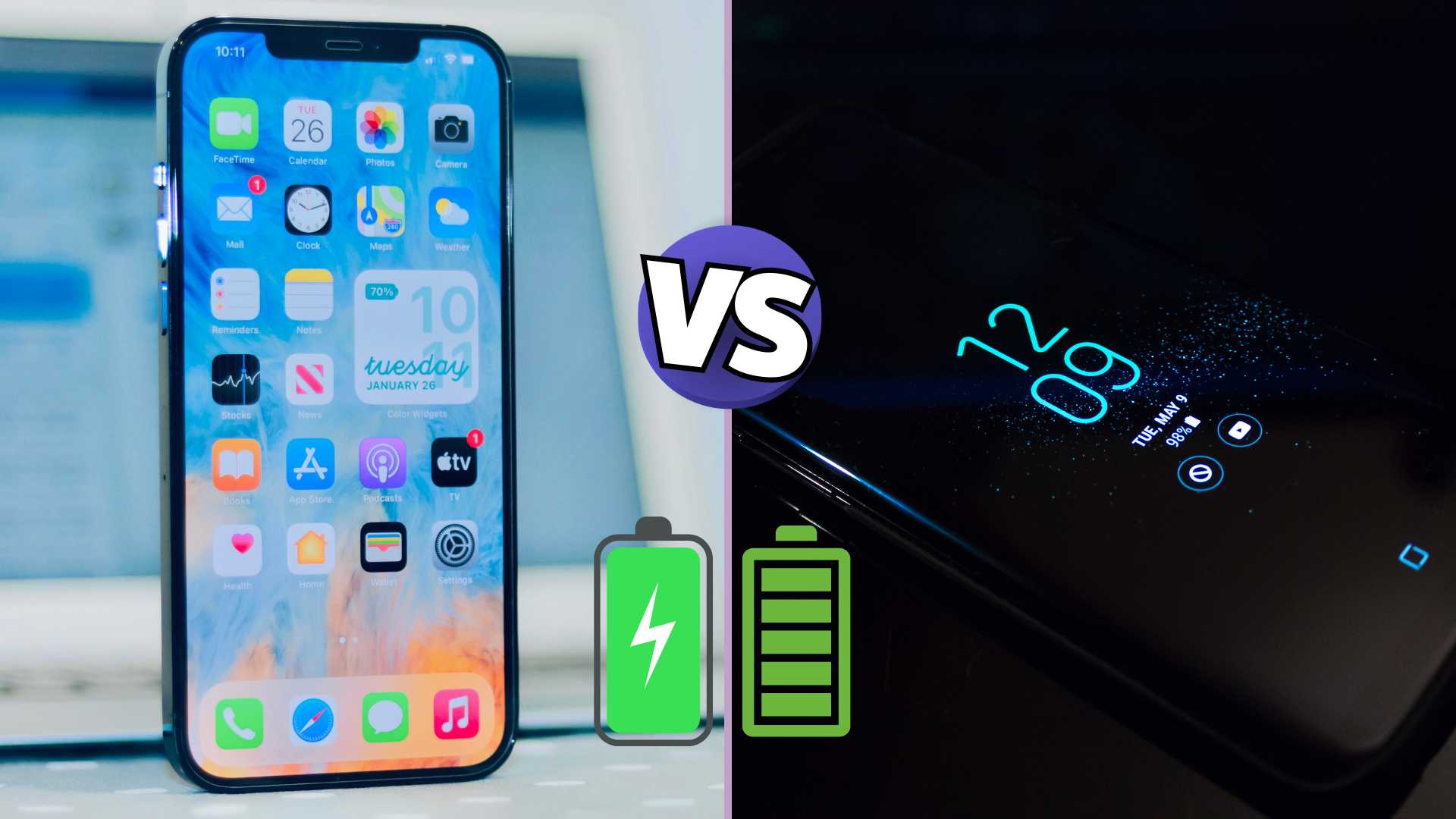
The Galaxy S24 Ultra is powered by a Li-Ion 5000mAh, non-removable battery with 45W wired, 15W wireless & 4.5W reverse wireless fast charging availability. While the iPhone 15 Pro Max has a Li-Ion 4441mAh, non-removable with 15W wired, 15W wireless & 4.5W reverse wireless fast charging availability.
Despite the fact that the iPhone has a smaller battery, it outperformed the Galaxy S24 Ultra in our battery life test. It scored higher in all test scenarios except for voice calls. This resulted in an Active Use score of 16 hours and a minute for the iPhone 15 pro max, compared to 13 hours and 49 minutes for the Galaxy S24 ultra.
Both scores are excellent. It’s just the iPhone does better.
Charging speed
The Samsung Galaxy S24 Ultra supports up to 45W wired, 15W wireless & 4.5W reverse wireless fast charging, while the iPhone 15 Pro Max maxes out at 15W wired, 15W wireless & 4.5W reverse wireless fast charging. And while both charging solutions are the fastest on the market, the Galaxy S24 Ultra is the phone that recharges faster of these two.
Speaker test
The S24 Ultra and the iPhone 15 Pro Max both have hybrid stereo speakers. One speaker is at the bottom, and another at the top, which also functions as the best earpieces.
When we tests, both phones rated Very Good quality for loudness, with only a slight but noticeable difference in sound quality. There is minimal difference in the sound quality, minimal yet hearable. The iPhone is the one with richer mid-tones and vocals.
Performance
Things don’t improve for the S24 Ultra when it comes to raw computing power. The Apple A17 Pro chip is faster than the latest Snapdragon. While the S24 Ultra boasts 12GB of RAM, the two mobile operating systems have different RAM needs.
Still, the Snapdragon 8 Gen 3 is still the fastest Android processor, so it will remain relevant for a long time. However, Apple’s CPU is faster than the Snapdragon 8 Gen 3 in both single-core and multi-core tasks. The Galaxy S24 Ultra performs better in GPU-bound tests, as the Snapdragon 8 Gen 3 has superior graphics performance.
Samsung promises 7 years of major OS updates for the S24 Ultra, which is better than Apple’s typical 5-6 years of iOS updates.
The more extended software support means better value preservation overall. However, the big question is how well the hardware in a 7-year Android phone would keep up with the software in terms of performance. Longer software support means better value retention, whereas iPhones have already proven to be quite usable for years after launch without significant performance drops. So, for now, we’ll call this one a tie.
However, Samsung takes the lead by integrating Google’s latest mobile AI features into the S24 series. These include:
- Circle to search.
- Chat translations.
- Generative AI message creation.
- Webpage summarization.
- Language interpreting for live calls or in-person conversations
- Recorded speech transcribing and summarization.
- Generative AI wallpapers and gallery edits, like content-aware fill or object moving and removal
Camera comparison
Moving into the main comparison between these two amazing photography and videography phones. The S24 Ultra’s camera system includes a new, large-sensor 5x telephoto camera, replacing the 10x module from the previous generation. It delivers excellent quality for both 5x and 10x zoom shots. The rest of the setup features a 200MP primary sensor that combines 16 pixels into 1, a 3x zoom camera, and an ultrawide camera with autofocus.
The Apple iPhone 15 Pro Max also introduces a new 5x periscope telephoto camera. It has a familiar 48MP primary camera that captures 24MP photos and a 12MP ultrawide with AF. The iPhone has one less camera compared to the Galaxy S24 Ultra.
Both phones offer lossless 2x zoom by cropping from their main cameras.
Photo Quality
Let’s start with the ultrawide and main cameras. The ultrawide cameras on both phones capture similar photos with identical detail levels, high contrast, and wide dynamic range. The iPhone produces better panoramic scene photos with more pleasing colors and less sharpening. For closer subjects, the Galaxy provides a more balanced look with natural-looking foliage and grass.
The Galaxy’s primary camera offers less artificial processing, making its photos more appealing compared to the iPhone’s. Samsung has improved its image processing algorithms this year, aiming for a more natural look, which pays off. Even though the iPhone’s color presentation is closer to reality, we prefer the S24 Ultra’s photos.
Both phones deliver high-quality 2x zoom thanks to their high-resolution main cameras. The details are comparable, but Samsung adds more sharpening to its 2x photos, making them appear more convincing than the iPhone’s.
While both phones excel in photography, the Samsung Galaxy S24 Ultra stands out with its natural image processing and versatile camera system.
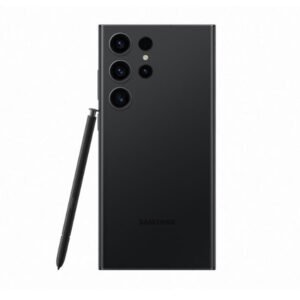
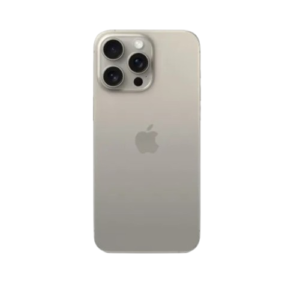
|
|
| Price | ৳244,000.00 ৳205,000.00 |
| Our Rating | |
| Brand | Samsung Apple |
| Category | Smart Phone Smart Phone |
Price in Bangladesh
| Official Price | ৳2,44,000 (12GB/256GB) ৳2,05,000 (256 GB)/ ৳259,999 (512 GB)/ ৳299,999 (1 TB) |
| Unofficial Price |
৳ 139,990 ( 12GB/256GB )/ ৳ 149,990 ( 12GB/512GB ) *Price may vary in shops. ৳153,000 (256 GB)/ ৳176,500 (256 GB)/ ৳194,000 (512 GB) |
| Global Price |
USA price $ 1,565 ( 12GB/256GB )/ $ 1,685 ( 12GB/512GB )/ $ 1,925 ( 12GB/1TB ) India Price ₹ 1,30,000 ( 12GB/256GB )/ ₹ 1,40,000 ( 12GB/512GB )/ ₹ 1,59,999 ( 12GB/1TB ) €1,435 ( 12GB/256GB )/ €1,545 ( 12GB/512GB )/ €1,765 ( 12GB/1TB ) $1,200 (256 GB)/ $1,400 (512 GB)/ 1,600 (1 TB) |
LAUNCH
| Announced | 2024, January 17 12-09-2023 |
| First Released | Available. Released 2024, January 24 22-09-2023 |
| BD Release | 2024, January 24 22-09-2023 |
Memory
| RAM |
12GB 8 GB |
| ROM | 256GB/ 512GB/ 1TB 256 GB/512 GB/1 TB |
| SD Card Slot | No No |
Back Camera
| Setup | Quad camera Triple camera |
| Camera |
200MP (Wide) 10 MP (Periscope Telephoto) 10 MP (Telephoto) 12 MP (Ultrawide) 48 MP ( Main camera ) 12 MP ( Wide-angle ) 12MP ( Telephoto ) |
| Resolution | 14500 x 13650 Pixels Quad 48+12+12 Megapixel + TOF 3D LiDAR scanner |
| Features |
LED flash, auto-HDR, panorama Dual-LED dual-tone flash, HDR (photo/panorama) |
| Video Recording |
8K@24/30fps, 4K@30/60fps, 1080p@30/60/240fps, 1080p@960fps, HDR10+, stereo sound rec., gyro-EIS 4K@24/25/30/60fps, 1080p@25/30/60/120/240fps, 10-bit HDR, Dolby Vision HDR (up to 60fps), ProRes, Cinematic mode (4K@24/30fps), 3D (spatial) video, stereo sound rec. |
Front Camera
| Camera |
Single: 12 MP, f/2.2, 26mm (wide), Dual Pixel PDAF Dual 12 Megapixel + SL 3D |
| Resolution | 12 Megapixel 12 Megapixel |
| Features |
Dual video call, Auto-HDR, HDR10+ F/1.9 aperture, PDAF, HDR, OIS, 1/3.6″, depth / biometrics sensor |
| Video Recording |
4K@30/60fps, 1080p@30fps 4K@24/25/30/60fps, 1080p@25/30/60/120fps, gyro-EIS |
PLATFORM
| Operating System OS => Every computer system run on a base software called Operating System (OS). Operating System controls all basic operations of the computer (such as smartphone, PDAs, tablet computers and other handheld devices). The Operating System allows the user to install and run third party applications (apps), apps are used to add new functionality to the device. | Android 13, upgradable to Android 14, One UI 6.1 iOS 17 |
| Chipset Chipset is a group of integrated circuits designed to perform one or a more dedicated functions, often with real time computing constraints, Popular smartphones are equipped with more advanced embedded chipsets that can do many different tasks depending on their programming. | Qualcomm SM8550-AC Snapdragon 8 Gen 2 (4 nm) Apple A17 Pro (3 nm) |
| CPU | Octa-core (1x3.36 GHz Cortex-X3 & 2x2.8 GHz Cortex-A715 & 2x2.8 GHz Cortex-A710 & 3x2.0 GHz Cortex-A510) Hexa-core, up to 3.78 GHz |
| GPU GPU (Graphics Processing Unit) is a single-chip processor designed to rapidly manipulate and alter memory to accelerate the creation of images in a frame buffer intended for output to a display, This includes things such as lighting effects, object transformations, and 3D motion. | Adreno 740 Apple GPU (6-core graphics) |
Body
| Dimensions |
162.3 x 79 x 8.6 mm (6.39 x 3.11 x 0.34 in) 159.9 x 76.7 x 8.3 millimeters 3.02 × 6.3 × 0.33 inches |
| Weight |
232 g or 233 g (8.18 oz) 221 g (7.80 oz) |
| Build Material |
Glass front (Gorilla Glass Armor), glass back (Gorilla Glass), titanium frame Corning-made Glass front & back, grade 5 titanium frame |
| Colors |
Titanium Black, Titanium Gray, Titanium Blue, Titanium Green, Titanium Yellow, Titanium Orange, Titanium Violet
Black Titanium, Natural Titanium, White Titanium, Blue Titanium |
Display
| Display Type Display Technology => A number of display technologies and types used in mobile phones => TFT (Thin Film Transistor), IPS (In-Place Switching), OLED (Organic Light Emitting Diode), AMOLED (Active-Matrix Organic Light-Emitting Diode), Super AMOLED (an even advanced version of AMOLED), Resistive Touchscreen (Resistive touchscreens contain two layer of conductive material with a very small gap between them which acts as a resistance), Capacitive Touchsceen (Capacitive touchscreen technology consists of a layer of glass coated with a transparent conductor) | Dynamic AMOLED 2X LTPO Super Retina XDR OLED |
| Size | 6.8 inches 6.7 inches |
| Resolution | 1440 x 3120 pixels 1290 x 2796 pixels (460 ppi) |
| Aspect Ratio | 19:5:9 19:5:9 |
| Refresh Rate | 120Hz 120 Hz |
| Display Protection Display Protection => Gorilla Glass is a special alkali-aluminosilicate glass shield with exceptional damage resistance that helps protect mobile displays from scratches, drops, and bumps of everyday use, It is always better to go for a smartphone with Gorilla Glass for that added protection and peace of mind. | Corning Gorilla Armor Ceramic Shield glass |
| Touch Screen | Multitouch Multitouch |
Connectivity
| Network | 2G, 3G, 4G, 5G 2G, 3G, 4G, 5G |
| SIM SIM (Subscriber Identity Module) is a small card that contains mobile network subscriber's account information. This allows the phone using the card to attach to a mobile network. The SIM card is most commonly associated with GSM and UMTS mobile networks. Moving a SIM card from one phone to another allows a subscriber to switch mobile phones without having to contact their mobile network carrier. SIM cards can also be used by a phone to store limited amounts of data, such as phone numbers and text messages. | Nano SIM Standard SIM |
| WLAN | ✅ Wi-Fi hotspot ✅ dual-band, Wi-Fi hotspot |
| Bluetooth Bluetooth is a wireless communications technology for exchanging data between mobile phones, headsets, computers and other network devices over short distances without wires, Bluetooth technology was primarily designed to support simple wireless networking of personal consumer devices. | ✅ 5.3, A2DP, LE ✅ v5.3, A2DP, LE |
| GPS GPS The Global Positioning System is a satellite-based radio navigation system, GPS permits users to determine their position, velocity and the time 24 hours a day, in all weather, anywhere in the world, In order to locate your position, your device or GPS receiver must have a clear view of the sky. | GPS, GLONASS, GALILEO, BDS, QZSS ✅ (L1+L5), GLONASS, GALILEO, BDS, QZSS |
| Radio | ❌ ✖ |
| USB | USB Type-C 3.2, OTG ✅ v3.2 |
| Infrared port | No ✅Yes |
SOUND
| 3.5mm Jack | |
| Loudspeaker | ✅Yes ✅Yes, with stereo speakers |
| Noise Cancel. Mic. | |
| Recording | |
| Extra Microphone |
SECURITY
| Fingerprint | Under display (ultrasonic) ✖ |
| Face Unlock |
Battery
| Battery Type Battery Type => Cell phones run on various kinds of batteries depending on the manufacturer, phone size or shape and features. There are basically four types of cell phone batteries => Lithium Polymer, Lithium Ion, Nickel Metal Hydride and Nickel Cadmium. | Li-Poly (Lithium Polymer) Li-Ion (Lithium Ion) |
| Capacity Battery Capacity is a measure (typically in Amp-hr) of the charge stored by the battery, and is determined by the mass of active material contained in the battery. The battery capacity represents the maximum amount of energy that can be extracted from the battery under certain conditions. | 5000 mAh 4422 mAh |
| Charging |
45W wired, PD3.0, 65% in 30 min (advertised) 15W wireless (Qi/PMA) 4.5W reverse wireless ✅ Wired, 50% in 30 minutes ✅ Fast Wireless Charging (15W MagSafe, 7.5W Qi magnetic) |
OTHERS
| Sensors Sensors are electronic components that detects and responds to some type of input from the physical environment. The specific input could be light, heat, motion, moisture, pressure and location, The output is generally a signal that is converted to use in computing systems, a location sensor, such as a GPS receiver is able to detect current location of your electronic device. |
⥂ Fingerprint (under display, ultrasonic), accelerometer, gyro, proximity, compass, barometer ⥂ Samsung DeX, Samsung Wireless DeX (desktop experience support) ⥂ Ultra Wideband (UWB) support Face ID, Accelerometer, Proximity, Gyroscope, E-Compass, Barometer |
| Manufactured by | Samsung Apple |
| Made in | South Korea Various ( China, USA, EU, GL, More ) |
| Models |
SM-S918B, SM-S918B/DS, SM-S918U, SM-S918U1, SM-S918W, SM-S918N, SM-S9180, SM-S918E, SM-S918E/DS A3106 (International); A2849 (USA); A3105 (Canada, Japan); A3108 (China, Hong Kong) |
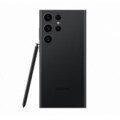
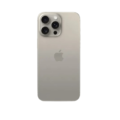
|
Disclaimer Note
we can't guarantee that all the specifications are 100% accurate. Although most of this information was taken directly from the brand's official websites and other verified sources, there is still a chance that some mistakes could have occurred with manual data entry or other factors.
